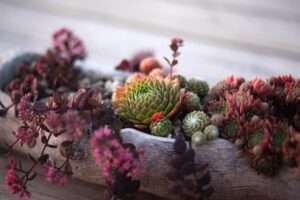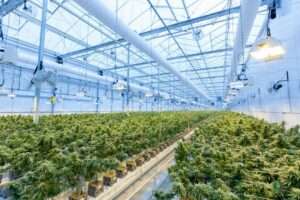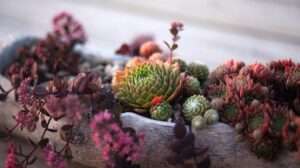Environmental factors play a significant role in the growth rate of succulents. Adequate sunlight, proper watering, and well-draining soil can all contribute to faster growth. Conversely, if these factors are not optimal, succulents may grow more slowly or even become stunted.
It’s important to note that succulents are generally slow-growing plants. This is part of their natural growth pattern and should not be a cause for concern. Their slow growth allows them to conserve energy and adapt to their environment over time.
The Importance of Patience in Succulent Care
Patience is a virtue when it comes to succulent care and growth. As mentioned earlier, succulents are slow-growing plants, and it can take months or even years for them to reach their full potential. It’s important to resist the temptation to rush their growth by overwatering or overfertilizing.
Succulents have evolved to grow slowly as a survival mechanism. Their slow growth allows them to conserve water and energy during periods of drought or unfavorable conditions. By growing slowly, succulents can adapt to their environment and ensure their long-term survival.
In addition to their slow growth, succulents also have a unique ability to regenerate from leaves or stems. This means that even if a succulent loses a leaf or stem, it has the potential to grow into a new plant. This regenerative ability further emphasizes the importance of patience in succulent care.
Common Mistakes that Can Slow Down Succulent Growth
While succulents are generally low-maintenance plants, there are some common mistakes that can hinder their growth. One of the most common mistakes is overwatering. Succulents are adapted to survive in arid conditions and do not require frequent watering. Overwatering can lead to root rot and other issues that can stunt their growth.
Poor soil quality is another mistake that can impact succulent growth. Succulents require well-draining soil that allows excess water to escape quickly. Using regular potting soil or soil that retains too much moisture can lead to waterlogged roots and hinder growth.
Lack of sunlight is another common mistake that can slow down succulent growth. Succulents require bright, indirect sunlight to thrive. Without enough light, they may become leggy and stretched out as they try to reach for more light. It’s important to place succulents in a location where they can receive at least six hours of sunlight per day.
Tips for Promoting Healthy Growth in Succulents
To promote healthy growth in succulents, there are several best practices to follow. First and foremost, it’s important to provide them with the right amount of water. Succulents should be watered thoroughly but infrequently. Allow the soil to dry out completely between waterings to prevent overwatering.
Choosing the right soil is also crucial for healthy succulent growth. Use a specialized succulent or cactus mix that provides excellent drainage. Avoid using regular potting soil or soil that retains too much moisture.
Proper sunlight exposure is another key factor in promoting healthy succulent growth. Place succulents in a location where they can receive at least six hours of bright, indirect sunlight per day. If you don’t have access to natural sunlight, you can use artificial grow lights to provide the necessary light.
How to Tell When Your Succulent is Flourishing
There are several signs that indicate a succulent is growing well and thriving. One of the most obvious signs is new growth. If you notice new leaves or stems emerging from the center of the plant, it’s a good indication that your succulent is healthy and growing.
Vibrant colors are another sign of a flourishing succulent. Many succulents have vibrant hues, such as deep greens, purples, or reds. If your succulent’s colors are vibrant and intense, it’s a sign that it is receiving the right amount of light and nutrients.
Plump leaves or stems are also a good indicator of a healthy succulent. Succulents store water in their leaves or stems, so if they appear plump and full, it means they are well-hydrated and thriving.
The Role of Environment in Succulent Growth
The environment plays a crucial role in succulent growth. Factors such as humidity, temperature, and air circulation can all impact how well succulents grow.
Most succulents prefer low humidity levels. High humidity can increase the risk of fungal diseases and rot, which can hinder growth. If you live in a humid climate, it’s important to provide good air circulation around your succulents to prevent excess moisture buildup.
Temperature is another important environmental factor. Most succulents prefer warm temperatures between 70-90°F (21-32°C). However, they can tolerate a wide range of temperatures as long as they are not exposed to extreme cold or heat for extended periods.
Conclusion: Enjoying the Beauty of Slow and Steady Succulent Growth
In conclusion, succulents are fascinating plants that have captured the hearts of many with their unique features and ability to thrive in harsh conditions. Understanding the growth cycle of succulents and the factors that can impact their development is crucial for their care and maintenance.
While succulents may grow slowly compared to other plants, their slow and steady growth is part of their natural adaptation to survive in arid environments. Patience is key when it comes to succulent care, as rushing their growth can lead to issues such as overwatering or poor soil quality.
By following best practices for succulent care, such as providing adequate sunlight, proper watering, and well-draining soil, you can promote healthy growth in your succulents. Monitoring their growth progress and looking for signs of flourishing, such as new growth and vibrant colors, can also help you track their development.
In the end, the beauty of succulents lies in their slow and steady growth. By embracing their unique characteristics and enjoying the process of caring for them, you can truly appreciate the fascinating world of succulents.
If you’re interested in learning about the meaning behind angel numbers, check out this comprehensive guide on Angel Number 333. It dives deep into the symbolism and messages associated with this powerful number. Whether you believe in angelic guidance or simply enjoy exploring spiritual topics, this article is a fascinating read. Discover the hidden meanings behind Angel Number 333 and how it can impact your life. Read more here.

















Add Comment